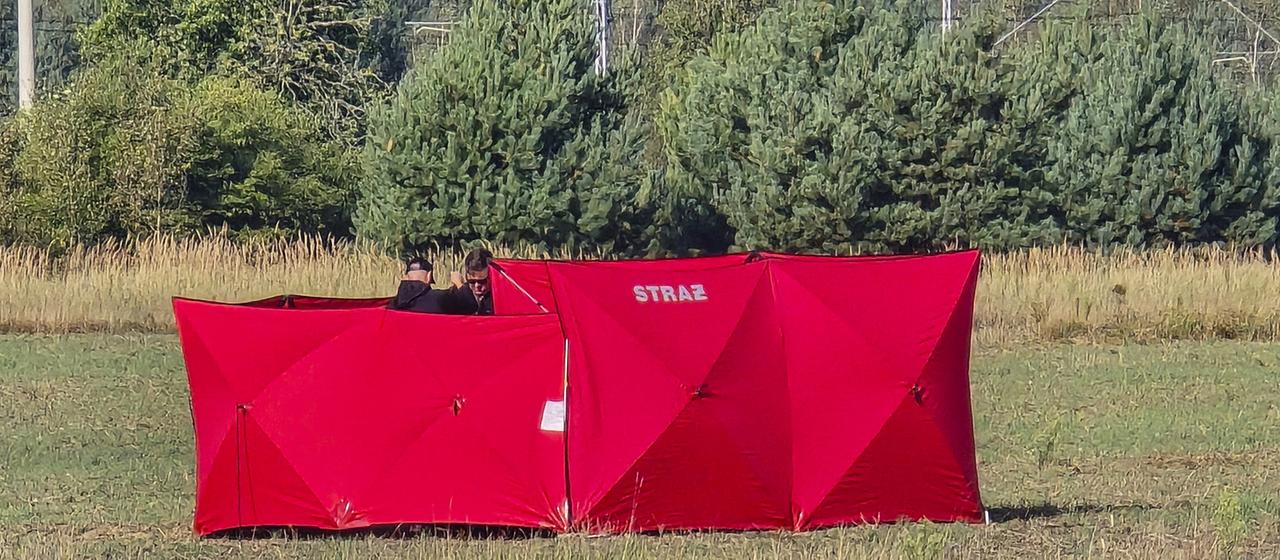
FAQ
Fighter jets shot down several drones suspected of being Russian over Poland. What is known about the incident and what does it mean for NATO? Key questions and answers.
With growing alarm, Poland has observed in recent weeks that drones from the east have repeatedly intruded into its airspace. Now the Polish Air Force has taken action: During a Russian attack on Ukraine, several unmanned aerial vehicles were shot down.
What exactly happened?
During the night leading into Wednesday, amid a wave of Russian attacks on Ukraine, a large number of drones violated Polish airspace. The Army High Command spoke of"more than a dozen." NATO reported that more than ten objects were detected by radar in Poland. German Defense Minister Boris Pistorius believes the drones were targeted. The drones involved 19 Shahed drones or similar models, launched from Belarus.
According to Defense Minister Wladyslaw Kosiniak-Kamysz, fighter jets then took off and used their weapons against the enemy targets. The army reported that several drones had been destroyed. According to the Polish Interior Ministry, seven drones and debris from a missile have been recovered so far. NATO said the alliance's air defense system also assisted in intercepting the drones.
Some airports were temporarily closed, including the international airport in Warsaw and the airports in Lublin and Rzeszow in the east of the country.
Why does this process have a new dimension?
Until now, Poland has regularly deployed its own fighter jets and those of its NATO allies stationed in Poland during Russian air strikes against Ukraine. However, this was only for surveillance purposes. For a few days now, its air defense system has also been put on standby.
What is new about the incident now is that aircraft were actually shot down in the airspace over Poland.
Is it known where the drones came from?
This has not yet been conclusively clarified. According to the Polish government, the drones originated in Russia. However, the Russian chargé d'affaires in Warsaw, Andrei Ordash, denied his country's responsibility in an initial statement.
All that is certain so far is that the drones entered Polish airspace at a time when Russia was carrying out massive airstrikes against Ukraine. Poland, an EU and NATO member, shares a more than 500-kilometer-long border with Ukraine.
How often have drones and other flying objects crashed over Poland?
In recent weeks, there have been several incidents in which hostile aircraft have entered Polish airspace. Just on Monday, debris from a drone was found in a cornfield near the village of Polatycze, near the border with Belarus. The drone was not carrying any explosives and was labeled in Cyrillic, according to the public prosecutor's office. It is still too early to say whether it was a military drone or an aircraft used by smugglers. No one was injured.
Back in August, a drone fell and exploded in a field near the Polish town of Osiny. The Defense Ministry said at the time that it was a Russian military drone and accused Moscow of provocation.
The most serious incident occurred in November 2022: At that time, a rocket hit the eastern Polish village of Przewodow, killing two men. As far as is known, it was a stray Ukrainian anti-aircraft missile.
Was there a concrete threat – or did Poland want to send a message?
The Polish Army High Command says this is an unprecedented incident due to the large number of drones."This is an act of aggression that posed a real threat to the security of the population," it said in a statement.
However, after the incidents of the past few weeks, Poland may also have wanted to send a clear message. Defense Minister Wladyslaw Kosiniak-Kamysz had already stated on Tuesday that the shooting down of drones was"justified," but that the concrete decision on this matter would have to be made by the army.
Poland is also alarmed because the Russian-Belarusian military exercise Sapad is scheduled to begin in neighboring Belarus on Friday. The Inspector General of the German Armed Forces, Carsten Breuer, estimates that around 13,000 soldiers will be training in Belarus and another 30,000 on Russian territory. According to information from Minsk, however, the exercise will be scaled down compared to the original plan and relocated from the western border to the interior of the country – in order to reduce tensions with the West. Poland nevertheless intends to close its border with Belarus – for fear of provocations.
What potential for conflict is there?
Since the beginning of the Russian attack on Ukraine in February 2022, Poland and the Baltic NATO members have feared being drawn into the conflict. In the current first airspace violations by drones on the eastern flank, it remained unclear whether these were technical malfunctions. Air defense systems can also deflect the unmanned systems from their course.
European NATO military officials have been saying for some time that Russia wants to test NATO's response and cast doubt on its willingness to act. The alliance is currently deploying Dutch F-35 stealth jets, as well as German Eurofighters and Patriot air defense systems, to protect Polish airspace.
Has Poland asked NATO for support?
Yes. The country has requested a procedure under Article 4 of the NATO Treaty. It provides for consultations if a NATO state considers itself threatened from outside. Specifically, it states:"The Parties shall consult each other if, in the opinion of either of them, the territorial integrity, political independence, or security of one of the Parties is threatened."
Article 4 of the NATO Treaty
Following the violation of its airspace by Russian drones, Poland requested consultations with NATO under Article 4 of the North Atlantic Treaty. According to Article 4, any member state may request the convening of a meeting of the North Atlantic Council in Brussels in the event of a threat to its"territorial integrity, political independence, or security." The issue must be discussed at the NATO Council meeting—this may, but does not necessarily, lead to joint decisions or measures.
The article has been invoked seven times since the Alliance was founded in 1949—most recently on February 24, 2022, the day of the Russian attack on Ukraine.
The potential scope of Article 4 is less clear than the promise of military assistance in the event of an"armed attack" against one or more NATO countries, as stipulated in Article 5 of the Treaty.
The article has been invoked seven times since the alliance was founded in 1949 – most recently on February 24, 2022, the day of the Russian invasion of Ukraine. The request was made at that time by Bulgaria, Estonia, Latvia, Lithuania, Poland, Romania, the Czech Republic, and Slovakia.
It is currently considered highly unlikely that Poland would request military support from the Alliance under Article 5—partly because this would pose a significant risk of escalation. Article 5 of the NATO Treaty regulates the obligation to provide mutual assistance within the Alliance and stipulates that an armed attack against one or more Allies shall be considered an attack against all.
Article 5 of the NATO Treaty
The so-called NATO alliance case following an attack on a member of the military alliance is regulated in Article 5. It reads:
"The Parties agree that an armed attack against one or more of them in Europe or North America shall be considered an attack against them all; they therefore agree that in the event of such an armed attack, each of them, in exercise of the right of individual or collective self-defense recognized in Article 51 of the Charter of the United Nations, shall assist the Party or Parties attacked by taking promptly, individually and in cooperation with the other Parties, such measures, including the use of armed force, as it considers necessary to restore and maintain the security of the North Atlantic area.
Any armed attack and any countermeasures taken in response shall be reported immediately to the Security Council. The measures shall cease as soon as the Security Council has taken the steps necessary to restore and maintain international peace and security.
What international reactions were there?
Leading Western politicians have condemned the incident. French President Emmanuel Macron described the drones in Polish airspace as"simply unacceptable." British Prime Minister Keir Starmer spoke of an "outrageous and unprecedented violation" of Polish and NATO airspace. Hungary, the Czech Republic, and Slovakia have expressed their solidarity with Poland, as have EU Commission President Ursula von der Leyen, EU Council President António Costa, and NATO Secretary General Mark Rutte. The latter called Russia's behavior"absolutely reckless."
Ukrainian President Volodymyr Zelenskyy called for a strong response and warned of an "extremely dangerous precedent for Europe."

